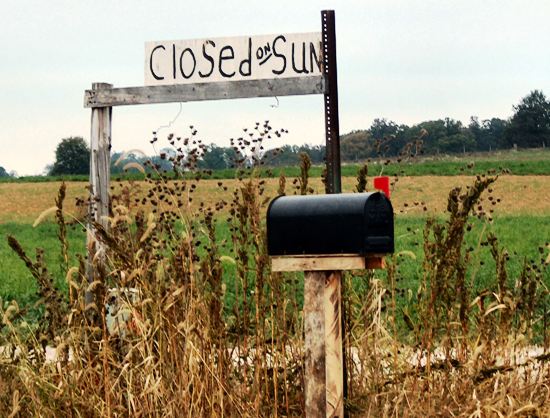1947: Amish court conflict over a “mite”
We’ve seen Amish in court quite a bit lately. Some cases have involved Amish clashing with laws of the state (KY SMV; PA horse neglect). Others involve grievances between Amish and former Amish (Amish beard-cutting).
For another example of the latter, we can look back in history to a 1947 Pittsburgh Post-Gazette newspaper piece “‘Mited’ Amish Farmer Given $5,000 by Jury”, describing an unusual lawsuit in Amish Ohio.
First, just what does “mite” mean? You won’t find this particular meaning of mite in the dictionary, at least not in the Oxford or Merriam-Webster versions.
In Amish Society John Hostetler elaborates on the word: “a shortened derogatory form of meide or meidung, meaning “to shun”. Hostetler describes it as “Amish journalistic jargon”. The only examples I have so far found of “mite” relate to this suit, so it may have been a case-specific usage. Nowadays reporters and the public primarily use the term “shun”.
The case
The case concerned an Ohio Amishman, Andrew J. Yoder, who left his church in order to join a more liberal congregation. The reason as stated in the Post-Gazette was “because he wanted to buy an automobile to be able to transport his invalid daughter for medical treatment”.
The Amishman was excommunicated, and as Hostetler reports, “claimed economic hardship as a result of the shunning”. Yoder sued four ministers of his former church, and won $5,000 in damages.
In an unusual interference in religious matters, the article reports that the judge “granted an injunction restraining the four churchmen from imposing any boycotts against Andrew J. Yoder which would deny him the right of religious liberty or cut him off from any social business relations with his fellow church members”.
The judge basically forbids the Amish from shunning the excommunicated Yoder, “[ordering] the four officials to withdraw any order instructing their congregation to boycott Yoder for alleged violation of church rules”.
I don’t know how that part worked out. Hostetler reports that the Bishop’s farm was put up for sale after he refused to pay Yoder (see Amish Society pp. 345-346 for a summary).
The Bishop’s property was auctioned off, netting only a portion of the damages, with another church minister in the suit eventually paying the balance. In a sad ending Yoder’s ill daughter Lizzie Mae died the following year at age 7.



re: meidung
Tragic. I have a friend whose daughter was born with health issues, requiring monitors, etc. They left the Amish, as they were forbidden the electric necessary to the monitors. It is hard for us to understand, and yet necessary to the continuation of their way of life.
I’m grateful not all Amish churches react like that! We use generators for many things in our church, including health care equipment.
Bending the Ordnung
Mark I understand some churches will even bend the Ordnung for special situations.
When I was selling books in your community about 10 years ago I came across a home which had air conditioning for half of the house, for the benefit of a family member with a medical condition.
This is actually a topic I investigated for my next book, I came across other examples while researching it. It seems some churches can be very rigid while others will make allowances when the individual or family in question has special circumstances.
There is that “diversity” thing again. 🙂 You are right that in many Amish churches there is flexibility and understanding. I can not imagine any of our people kicking up a fuss about Ordnung when someone’s health is involved, but I could think of groups where the Ordnung is very strict and there is not going to be much chance of anything changing for any reason.
I’m now wondering what your new book is about!
The new book, which for one reason or another is taking forever to come out, essentially looks at different interesting facts about Amish life, across 12 categories. This idea of bending the Ordnung in special cases is one of them. Diversity among groups is something I’ve had to address throughout the book, but it is very interesting to me.
Mark,
Speaking about your new book, would you happen to have a ballpark time frame for when the book will be finished or is it just “It’ll be finished when it is finished.”:)
50 Fascinating Amish Facts
Thanks for asking Melissa, it was supposed to be out already but with my father’s recent illness and passing, a lot of things got back-burnered. It has been fully written and mainly needs to go through final edit and then some finishing touches.
It’s way overdue, needless to say I’m really looking forward to getting it done! 🙂
It sounds very interesting. I’m really glad to hear you are going to take a look at diversity!